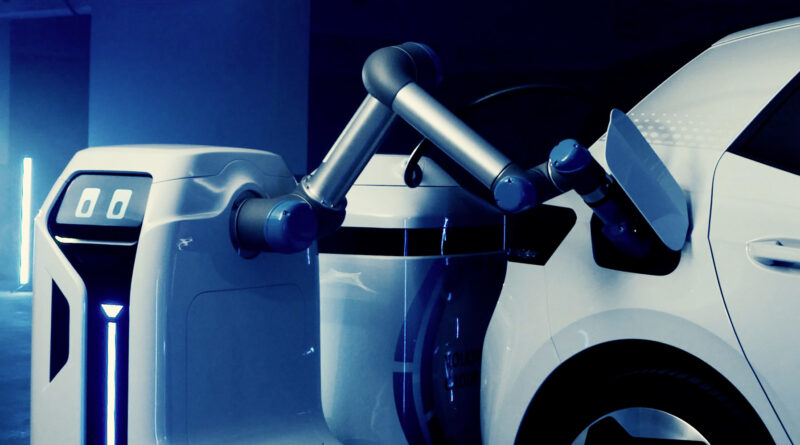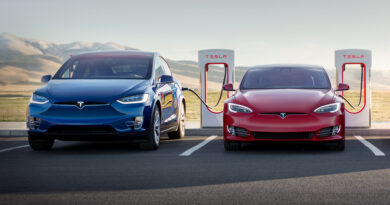Meet the robot that could soon be charging your electric car
Charging an electric car could soon involve little more than a tap of a smartphone screen.
Volkswagen has developed a prototype of a mobile charging robot that operates autonomously and can automatically open the vehicle’s charging flap before plugging in.
Controlled either via a smartphone app or by directly communicating with the vehicle, the charging robots are essentially battery packs on wheels that can return to a central base to plug themselves in to be recharged before finding another EV in need of a top-up.
Standing around one metre tall and personified with digital eyes, the prototype robots have metal arms that adjust to the height and location of the charge port.

In spruiking the technology late in 2019 Volkswagen – which hopes to sell the ID.4 electric SUV in Australia as early as 2023 – said the charging robots would each hold about 25kWh of electricity and be able to deliver it at up to 50kW.
That’s enough to classify them as fast chargers but falls short of the 350kW delivered by the latest generation ultra-rapid chargers.
Providing energy at the full 50kW means the charging robots would be emptied in about half an hour.
For EVs with larger batteries in need of a full charge it would also mean three or four runs back to the charging base so the robot can be topped up.
However, Volkswagen sees the charging robots as another crucial cog in the complex infrastructure puzzle involved with the rapid global uptake of electric vehicles in need of charging networks.
Volkswagen says such charging robots could be relatively easily deployed within existing parking stations, effectively providing broad charging capabilities without the need for individual charge units spread around the facility or specific spaces reserved for EVs.
Thomas Schmall is the CEO of Volkswagen Group Components, which developed the mobile robotic chargers and plans to develop more EV charging solutions in future.

“Our developments do not just focus on customers’ needs and the technical prerequisites of electric vehicles,” says Schmall. “They also consider the economic possibilities they offer potential partners.”
Schmall says it’s all about reducing costs.
“Setting up an efficient charging infrastructure for the future is a central task that challenges the entire sector,” he says.
“We are developing solutions to help avoid costly stand-alone measures. The mobile charging robot and our flexible quick-charging station are just two of these solutions.”
“Our charging robot is just one of several approaches, but is undoubtedly one of the most visionary.”
Of course, there are other solutions being considered for top-up EV charges in public places such as carparks.
One is induction charging or wireless charging, which uses the same principles as wireless phone charging, albeit on a much larger scale. Induction charging uses coils built into the ground or a pad sitting on top of it to deliver a magnetic field to the car, which then turns that back into electricity.
In early 2021 Volkswagen says it will also launch a “flexible quick charging station”. As the name suggests, it can provide fast EV charges – expected to be up to 150kW.
However, whereas charging stations providing that level of power often require upgrades to a building’s electricity supply, the Volkswagen charging station has a built-in battery that stores electricity provided from lower-voltage supplies.
Volkswagen says “the station becomes a permanent charging point without the additional cost and effort required for a comparable fixed quick charging station”.
In future the charging stations are also planned to use disused EV batteries.




